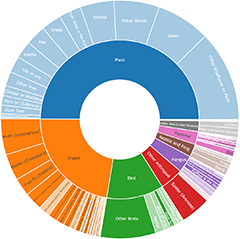Lilies & Irises
This group includes any herbaceous monocot that has prominent flowers in which the flower parts are in two whorls. Monocots have one seed leaf compared to two in dicotyledons. Mature plants are recognised by parallel longitudinal veins in their often narrow leaves and by having flowers parts in threes or multiples of three.
Identification is largely on differences in flower parts, the number of flowers borne at each part of the stem from which a leaf is attached or on the form of basal leaves. Ideally records for lilies and irises should include close-up photographs of the flowers and basal leaves and a shot that shows flower arrangement along the stem.
Announcements
Hello NatureMaprsAs we move into the cooler months and sighting counts begin to wind down our team has been working tirelessly to ensure our platform’s usability and performance. All merch has been po...
Continue reading
Improvements to data import tool (coming soon)
NatureMapr welcomes Edgar McNamara
Platform wide attribute changes
New Feature: Moderator Quick Responses!
Discussion
Dianella tasmanica
Agapanthus praecox subsp. orientalis
Top contributors
- MichaelBedingfield 342
- trevorpreston 312
- Mike 271
- Tapirlord 248
- sangio7 185
- KylieWaldon 173
- Darcy 161
- AaronClausen 141
- MatthewFrawley 129
- MichaelMulvaney 115
Top moderators
- MichaelMulvaney 1.4K
- Tapirlord 1.2K
- MichaelBedingfield 957
- BettyDonWood 569
- natureguy 416
- Darcy 215
- RWPurdie 214
- plants 209
- Venture 165
- JasonPStewartNMsnc2016 80



